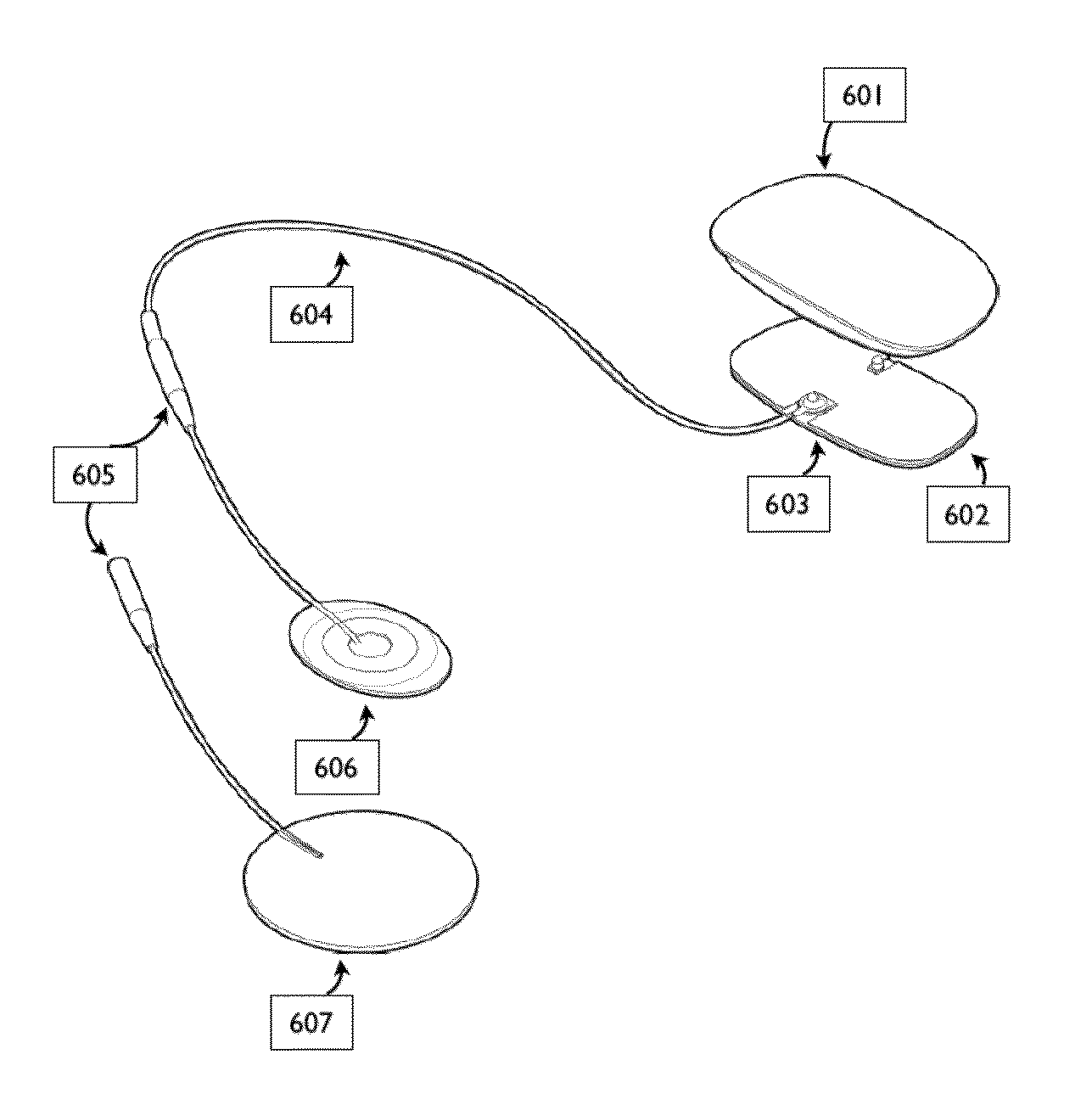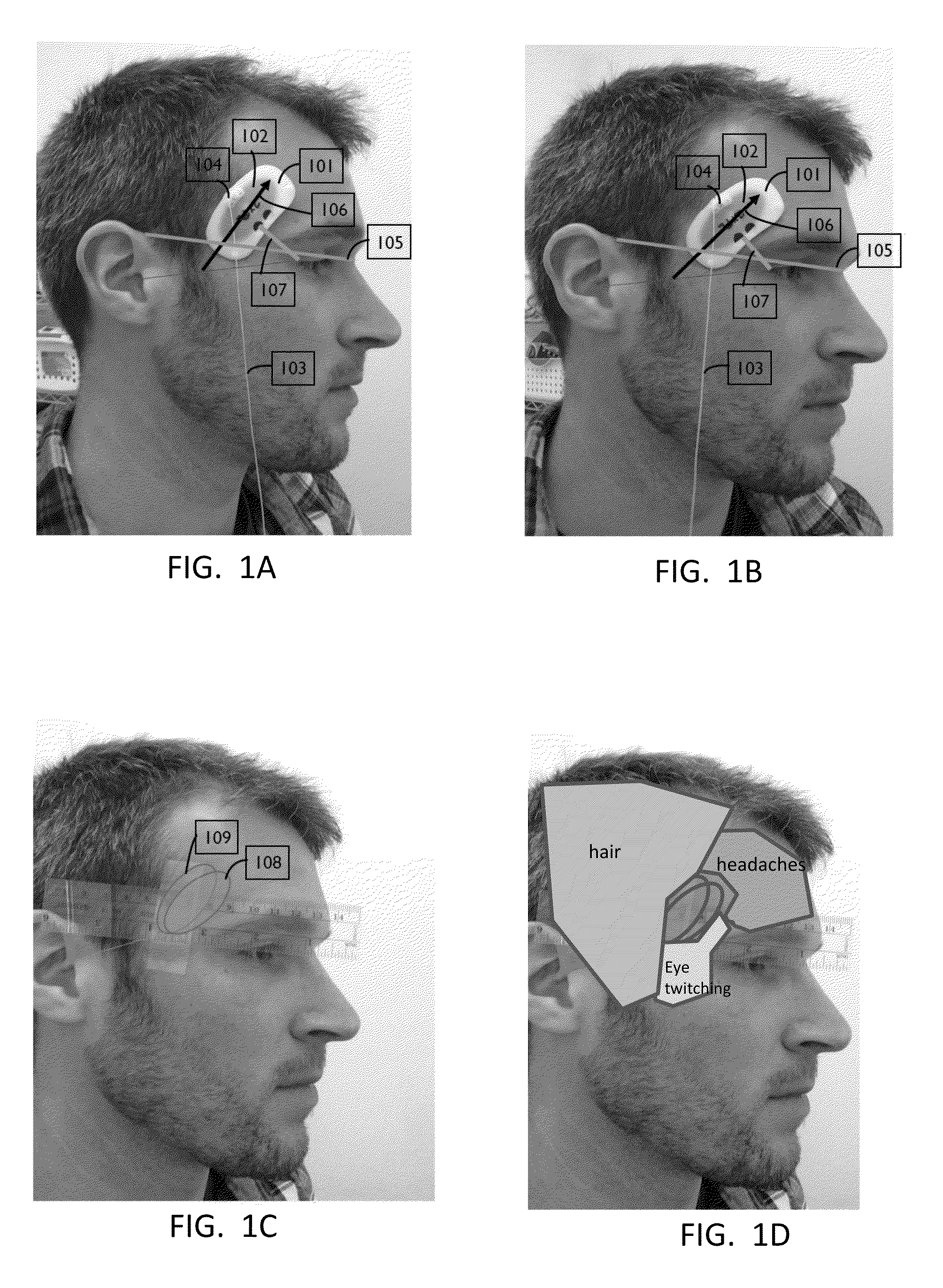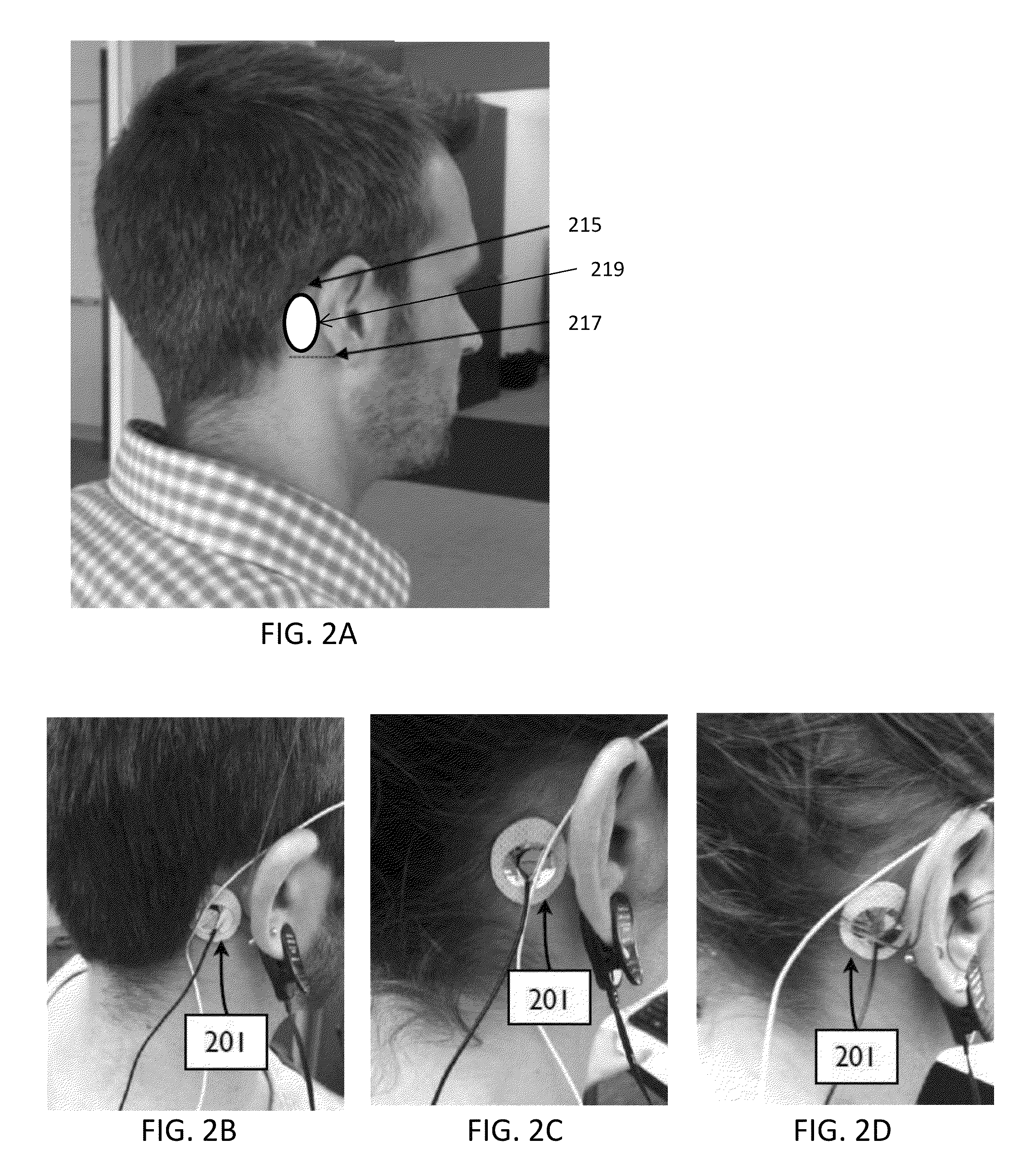Transdermal electrical stimulation devices for modifying or inducing cognitive state
a technology cognitive state, which is applied in the field of transdermal electrical stimulation, can solve the problems of existing systems and methods, cognitive state, perception, motor output, and existing systems and methods that are lacking in at least some cases in their capacity, and achieves fast transitions, reduce habituation, and enhance cognitive effect and/or perception. effect of cognitive
- Summary
- Abstract
- Description
- Claims
- Application Information
AI Technical Summary
Benefits of technology
Problems solved by technology
Method used
Image
Examples
Embodiment Construction
[0100]Described herein are transdermal electrical stimulation (TES) methods and apparatuses, including devices and systems, such as TES applicators for modifying a subject's cognitive state. In general, these applicators and methods for TES may induce neuromodulation with electrical stimulation delivered to a human subject to induce a beneficial or desired change in cognitive function and / or cognitive state. Other examples of devices and methods for transdermal electrical stimulation (including transcranial electrical stimulation) are described in U.S. patent application Ser. No. 14 / 091,121 by named inventors of this application titled “Wearable transdermal electrical stimulation devices and methods of using them” and is incorporated in its entirely herein.
[0101]In general, described herein are general TES waveforms parameters that may be used to invoke, enhance, or modify a variety of cognitive states. Although the apparatuses and methods described herein may be used to provide TES...
PUM
 Login to View More
Login to View More Abstract
Description
Claims
Application Information
 Login to View More
Login to View More - R&D
- Intellectual Property
- Life Sciences
- Materials
- Tech Scout
- Unparalleled Data Quality
- Higher Quality Content
- 60% Fewer Hallucinations
Browse by: Latest US Patents, China's latest patents, Technical Efficacy Thesaurus, Application Domain, Technology Topic, Popular Technical Reports.
© 2025 PatSnap. All rights reserved.Legal|Privacy policy|Modern Slavery Act Transparency Statement|Sitemap|About US| Contact US: help@patsnap.com



